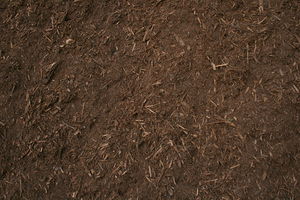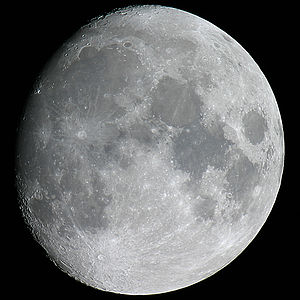Moon gardening is a modern take on what is believed to be an ancient gardening method. There is really nothing new or different about it. You do exactly the same things that you are doing in your organic garden already - you just do them at particular times according to the phases of the moon.
It is well known that the gravitational pull of the moon has an effect on natural phenomena such as tides. Moon gardening simply takes the ancient belief that the moon also has an effect on the plants and animals living on the earth, and translates that into principles that you can apply in your garden.
|
|
| The waxing gibbous Moon as observed from Earth (Photo credit: Wikipedia) |
The principles of moon gardening governed farming as well as hobby gardening for centuries, if not for millennia. It was only in the 20th century, when modern farming methods and chemical fertilizers were introduced to make intensive farming possible, that farmers and gardeners abandoned the old ways.
The best known principle of moon gardening divides the moon cycle into four periods. The first and second periods are when the moon is waxing or getting bigger, with the first period ending when you can see the first quarter of the moon (a half moon shape). The third and fourth periods are when the moon is waning or getting smaller. The fourth period includes the dark day(s) until the new moon begins the cycle again. A full moon cycle is approximately 29 days, so each quarter lasts for around one week.
In the first quarter of the cycle, you can plant leafy crops. In the second period, you can plant fruit crops. In the third period, plant root crops and perennials.
In the last period, you do not plant anything. At this time, according to the principles moon gardening, the tidal pull means that the water table is receding and there is less water available for your plants. So this is not a good time for seeds to be planted or for seedlings to be planted out.
During this final period, you can do other things in the garden such as pruning. The main thrust of deadheading roses, dahlias etc should also be undertaken during the last quarter of the moon's cycle. The plant will then put out more flowers while the moon is waxing. If you deadhead earlier in the moon cycle, the flowers that grow back will be fewer and weaker.
To take moon gardening a step further, there are also guidelines on what to plant according to where the moon is in the sky. Leaf crops are best planted when the moon is in Cancer, Scorpio or Pisces; root crops when it is in Taurus, Virgo or Capricorn; flowers when it is in Gemini, Libra or Aquarius; and fruit when it is in Aries, Leo or Sagittarius.
|
|
| Phases of the moon. (Photo credit: Wikipedia) |
So if you are about to plant a fruit tree, for example, according to moon gardening, you would wait until the week when the moon is in its second period (between the first quarter and the full moon). Then, during that period, choose a day when the moon is in the astrological houses of Aries, Leo or Sagittarius.
Note that this goes by where the MOON is in the sky, not the sun. It is sun signs that tell us that, for example, Aries runs from mid-March to mid-April. This has nothing to do with where the moon is. The moon moves through the houses more quickly, and only stays in each house for 1-2 days.
To find out which house the moon is in, you will need to consult a lunar calendar. You can find these online, but keep in mind that it varies in different parts of the world. Look for one that relates to your own country, state or region.
Some people are skeptical about the idea of planting and gardening according to the phases and position of the moon, but why not give it a try? You do not have anything to lose, and you may find that your organic garden thrives on moon gardening.













